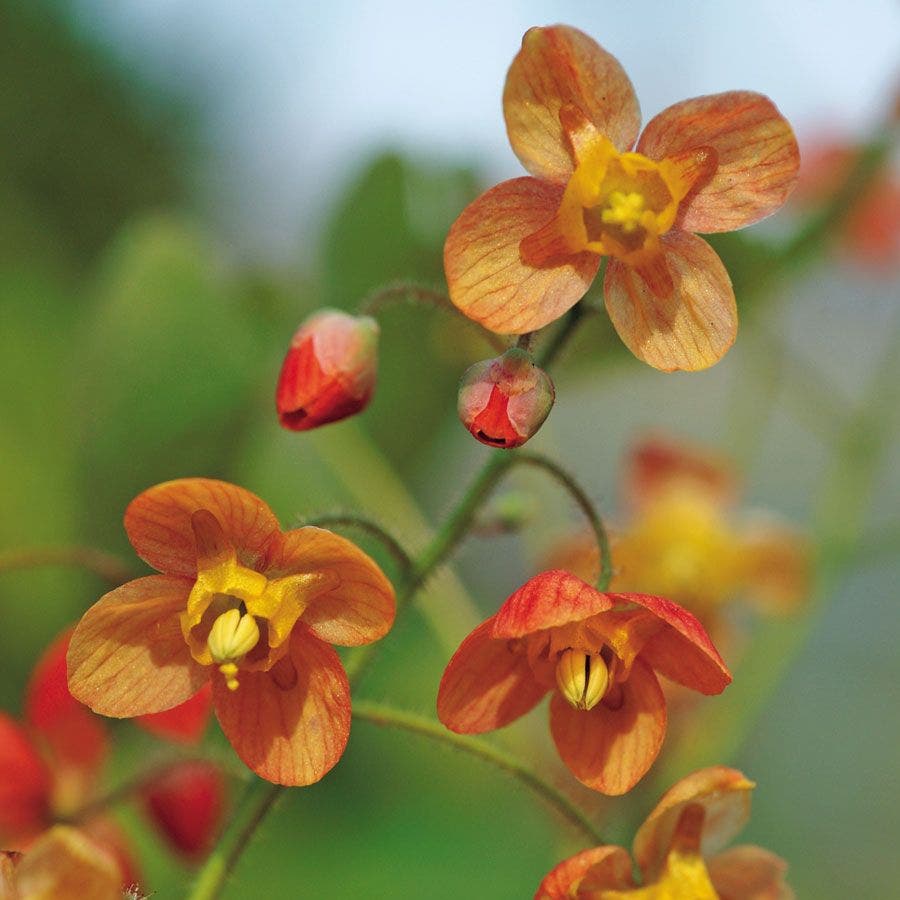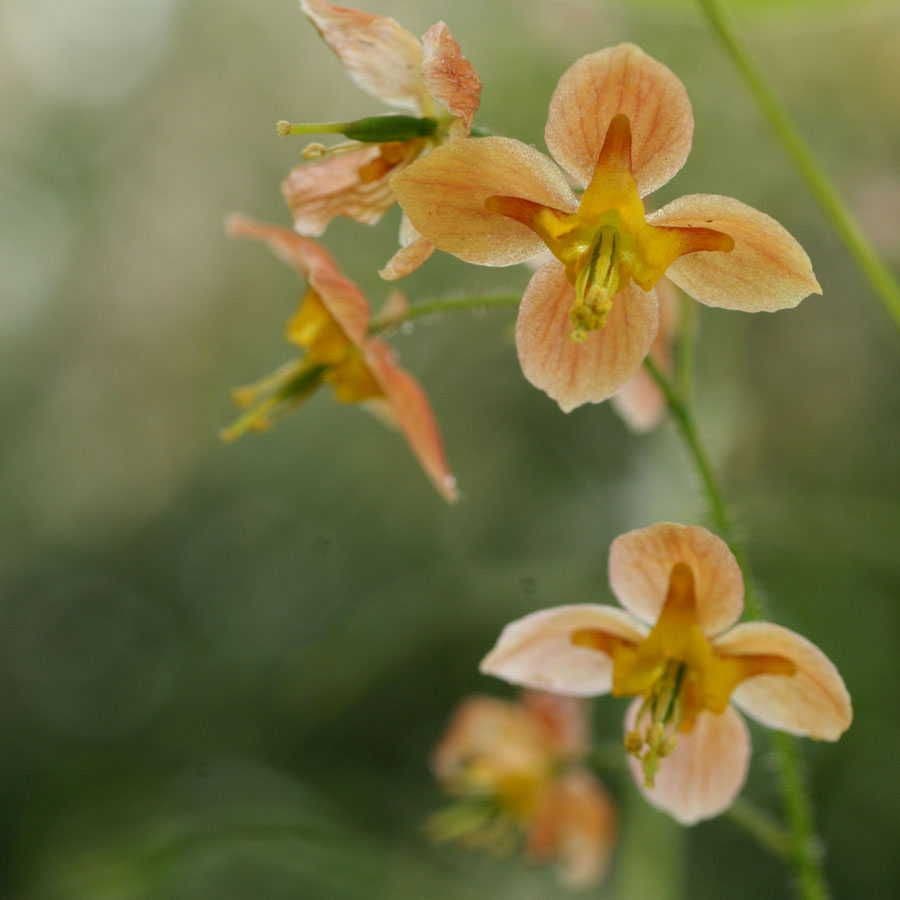Epimedium 'Orange Queen'
Epimedium 'Orange Queen'
Zone compatibility details
Understanding the Prices on Our Product Pages
When shopping on our site, you might notice different types of prices listed for products. Here’s a quick guide to help you understand what each price means:
- Regular Price: The price before any discounts, typically reflecting the median price from the past 90 to 180 days, excluding special promotions and clearance events.
- Now Price: The updated price of an item after a reduction from the regular price. Now Prices are often limited to a short time frame and offer the opportunity to save.
- MSRP: Manufacturer's Suggested Retail Price, provided by the manufacturer as a benchmark to highlight the value of our current pricing.
- Discount Exempt: Products labeled discount exempt are not eligible for discounts or promotional offers.
Please note that product prices are subject to change without notice.
Couldn't load pickup availability
Your ZIP code ✎
Zone compatibility details
This variety’s zone range
—
My hardiness zone
—
The USDA hardiness zones offer a guide to varieties that will grow well in certain climates. Each zone corresponds to the minimum winter temperatures experienced in a given area. Make sure that your hardiness zone lies within the zone compatibility range of this variety before ordering.
Spring Shipping Schedule
Spring Shipping Schedule and Zone Opening Earliest Ship Dates
Note: At Park Seed, we are committed to shipping healthy live plants at the ideal planting time for your zone. In order to ensure our plants are shipped at the optimal conditions, we regularly adjust our shipping timeframes as needed. The below table reflects our current estimate of timing for rose, live plant and bulb shipping this season.
| Zone | Bareroot Roses | Container Roses | Plants & Bulbs | Sweet Potato & Avocado | Citrus | Blooming Blocks |
|---|---|---|---|---|---|---|
| 1-3 | Early-Mid May | Mid May | Mid May | Late May-Mid June | Early-Mid May | Early-Mid May |
| 4-5 | Early-Mid Apr | Late Apr-Early May | Late Apr-Early May | Mid-Late May | Late Apr-Early May | Early-Mid May |
| 6 | Mid-Late Mar | Mid-Late Apr | Mid-Late Apr | Early-Mid May | Early-Mid Apr | Early-Mid May |
| 7 | Early-Mid Mar | Mid-Late Apr | Late Mar-Early Apr | Late Apr-Mid May | Early-Mid Apr | Early-Mid May |
| 8 | Mid-Late Feb | Mid-Late Apr | Late Mar-Early Apr | Mid-Late Apr | Early-Mid Apr | Early-Mid May |
| 9-13* | Late Jan-Mid Feb | Mid-Late Apr | Late Mar-Early Apr | Mid-Late Apr | Early-Mid Apr | Early-Mid May |



Grow Zone
4 - 9
Mature Height
10
Mature Width
16
Sun / Shade
Part Shade and Shade
Bloom Size
need bloom size meta
Tomato Fruit Set
Days To Maturity
Fruit Weight
Soil Tolerance
Normal, loamy, Poor, and Sandy
Moisture
Dry and Moist, well-drained
Description / Epimedium 'Orange Queen'
Synonym: 'Orangekonigin.' We are delighted to bring this splendid Epimedium to Park Seed gardeners this season, and we urge you to reserve your plants at once to avoid disappointment. 'Orange Queen' is a stellar cultivar, its lovely tricolored blooms making sense of the common name Fairy Wand, while its handsome foliage (changing colors every season) offers year-round appeal on an open, airy habit. If you have a patch of dry shade that you would like to plant rather than mulch, 'Orange Queen' is the perennial you must have!
This German introduction has so many merits, it's difficult to know where to begin. The flowers are the most attention-getting, so first to them: single and richly colored in orange, yellow, and red, they arise 5 to 9 on every flowering stem. The stems are 10 to 12 inches long, about the same height as the plant, so when the blooms begin opening in mid-spring, cut back any of last year's foliage that is still hanging about. (You won't want to touch the new leaves, however -- more about that in a minute!) They continue to arise through late spring, lovely for cutting yet irresistible in the garden as well, bobbing on the fresh spring breezes.
As lovely as the blooms are, the foliage rivals them for ornamental appeal. The new spring leaves open pale green with bold red edges (too pretty to be cut to make room for the flowers!), then turn mid-green for summer. In autumn they acquire warm tones again, this time flushes of bronze and deep red. They remain through winter in mild and warm climates, though you will want to trim them the following spring. Each heart-shaped leaf is 2 to 3 inches long and held out gracefully, for a very layered, airy look that keeps its grace and hold even in midsummer heat. Very ornamental!
'Orange Queen' reaches 8 to 10 inches high (out of bloom; the flowers may add another couple inches) and spreads about 12 to 18 inches wide within a few seasons. It's a very slow grower, which is why you may not notice for several years that it has made itself at home in your garden and is naturalizing magnificently. Very long-lived, it is a legacy planting, and one which you will admire more with every successive season. It's hard to explain why; Epimedium in general and 'Orange Queen' in particular have that effect on gardeners!
One reason may be this plant's willingness to establish in the dry shade beneath shrubs and large perennials, land scorned by the less-patient in the plant kingdom. Epimedium likes neutral to acidic soil, so consider sitting it in front of Rhododendron, Camellia, and among small to medium Hosta cultivars. The roots won't fight; they'll coexist, even as Epimedium begins its majestic journey beneath the soil to colonize new areas. Pamper it the first season, as you would any new plants, with moist, enriched, very well-drained soil, then let it go. It thrives in dry conditions, doesn't mind poorly fertile soils, and tolerates drought admirably once established!
'Orange Queen' is a cultivar of E. x warleyense.' This species is itself a hybrid of E. pinnatum ssp. colchicum and E. alpinum, named for Warley Place, the fabulous British gardens created by Miss Willmott, the tireless (and fabulously eccentric) Victorian plantswoman. Any plant that will give you an excuse to tell the story of Miss Willmott's approach to horticulture is worth adding to your garden, but 'Orange Queen' is truly exceptional, introduced by German nurseryman Ernst Pagels and beloved by gardeners far and wide. Do not hesitate to add it to your landscape; order it today. Zones 4-8.
Product Details
SKU: 48184
Genus: Epimedium
Species: warleyense
Variety: 'Orange Queen'
Item Form: Bareroot
Bloom Color: Multi-Color, Orange, Light Red, Yellow
Light Requirements: Part ShadeShade
Moisture Requirements: Dry, Moist, well-drained
Soil Type: Normal, loamy, Poor, Sandy
Bloom Start: Mid Spring
Bloom End: Late Spring
Uses:- Beds
- Border
- Fall Color
- Foliage Interest
- Outdoor
- Winter Interest
- Bloom First Year
- Butterfly Lovers
- Easy Care Plants
- Fall Foliage Changes
- Flower
- Free Bloomer
- Spring Foliage Changes
State Shipping Restrictions: GU, ID, PR, VI

